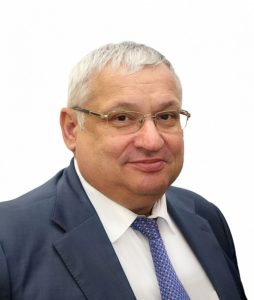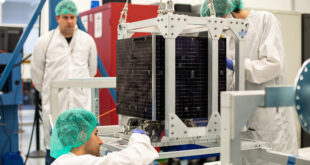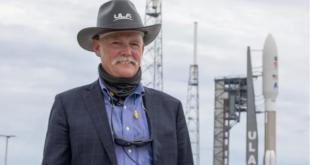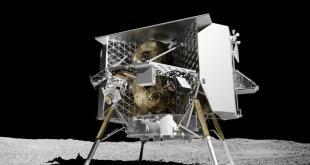
S7 Space is the first Russian commercial company providing a full service on the launches of spacecrafts with use of the Zenit launch vehicles. Activity of S7 Space also includes operation support of space-rocket system “Zenit M” (“Land Launch” project) at Baikonur Cosmodrome.
Our contributor Vitaly Egorov talked with Mr Sopov, the company’s Director General, about the future of the Sea Launch platform, the role of S7 in preserving business relations between Russia and Ukraine, the development of launch vehicles by Russian private companies and more.
What was your path to the space industry?
Different people have a different path to the space industry. In my case, I got there quite by accident. In 1979 I graduated from a military academy and got a job appointment at the Baikonur Cosmodrome. That was my path to the cosmodrome.
Can you specify the military academy you graduated from?
The High School of Military Engineers in the city of Perm. At Baikonur, I joined the testing of the Almaz program. The program was in its prime then. I took part in the unified timing system, the docking system and the ranging system testing. In 1984 I was promoted to head of the automated pre-launch preparation system division of the reusable space system. It was from that complex that the Buran spacecraft was launched from on the Energiya launch vehicle.
Then, in 1991, the Soviet Union collapsed. I was redirected to work for the Kazakh space research agency in Alma-Ata. I was head of this agency until 1994, which included overseeing commercial operations.
How did you become part of the private space industry?
I returned to Russia and have been in private business since then. I’ve been a long-time colleague of Vladislav Filev [director general of the S7 Group of Companies, Editor’s note]. And when the purchasing of the Sea Launch complex was being considered, he just asked me: ‘Why don’t we just buy it?’ And he made total sense. And it was then that we tried to figure out what we were capable of: could we assemble a capable team, could we find young professionals to join us as there is this age gap problem now, meaning there’s a lack of younger people in the industry.
What if they’re not just up to the professional level yet, but they burning with urge?
So, here’s our basic idea: we hire young professionals aged 25-30 who will in due time replace the older professionals. The Sea Launch complex is planned to operate for another 25-30 years which is beyond my space as a professional. So, young people will step in and keep it running.
It’s rumored the next Zenit launch is likely to happen in 2019. How realistic is this date?
It’s a good question. Zenit is not a cutting-edge technology in any way. What we must consider is the condition of the launch complex. You should also keep in mind there’s a factor in the space industry called the adaptation period when the satellite is mated to the rocket. It takes up to 18 months for the Sea Launch. If we were aimed at launching sometime in 2019, we should’ve started getting ready as early as May or July 2018. But we would have to de-mothball the launch complex first. To be more particular, the Sea Launch is a sea vessel and as such it requires inspection. The command ship must go to Canada for inspection, probably to have the platings replaced, which takes time.
Speaking about the young professionals, they need apprenticeship in order to get experience. But if you get ahead with getting ready the vessel for the next launch, more experience will be gained by sailors rather than rocket people.
Not really. It’s more about solving complex issues when dozens or even hundreds of people hailing from around the globe would have to adhere to one technical cooperation plan. They all need to understand each other.
Does that mean that one of the primary application criteria would be having a good command of English?
Undoubtedly so. We have an international crew working together. Our current captain is Norwegian, our sailors and engineers are Norwegian too. We also employ Russian and Ukrainian specialists. Our telemetry specialists are English speakers as well.
Let’s talk about getting experience in operations. S7 was reported to have been the actual launch operator during the recent Angolan Angosat satellite launch. Could you tell us in more detail what was your company’s role in that?
We were invited to operate that launch by the Energiya Corporation as they were then responsible for that launch. The launch vehicle to be used was the Zenit. We had to keep in touch with the Yuzhnoe State Design Office, the supplier of the rocket. We had to use professional infrastructure that would be capable of planning the job properly. Unfortunately, the current technology doesn’t allow for a lot of technology unification. Every spacecraft has its own unique features, which means that we have to develop a specific design plan and a mission task that would take into account the gaps between the fairing and the spacecraft as well as the angular orientation of the spacecraft. All of this must go into the design and then be handed over to the design office, which comes up with its own initial launch data. They have to model it. The modeling and the drafting of the mission scenario can take up to 3 months. Our company did the conceptual design. Our specialists were not part of the launch teams. Our area of responsibility was the conceptual design, cooperating with Ukrainian specialists and servicing the launch vehicle.
What will be your participation in the renewed Zenit program? Hopefully, there are still some ways of interaction between the Russian and Ukrainian parties and S7 seemed the right candidate for the intermediary role between the two not very friendly nations.
Let me explain how the Sea Launch works. First, the launch vehicle is delivered to the Sea Launch platform as separate stages. The first and the second stage both arrive in the fully assembled state each. It is actually a two-stage rocket. Another element is the fairing built by Boeing. All these elements are then assembled. Our American rival, the Orbital ATK company, ordered the first stage of their rocket in Ukraine. As for our company, we will have to deliver the first and second stages to the Sea Launch which is on US territory. The final assembly of the rocket will take place there.
Will the engines be already installed on the stages?
Yes.
So, Russian engines will be transported to Ukraine for assembly there?
Correct.
It’s quite a good achievement, actually.
The Sea Launch is a unique project for a number of reasons. Especially, politics-wise. In these turbulent times, it is about the only little island that connects Russia to the USA and Ukraine. The US government contemplated for eighteen months before finally authorising us to run the platform. They took time to approve it as this is going to be beneficial for the relations between our two nations. Ukraine didn’t cancel the contract for delivering the stages. Now we’re only waiting for the positive decision of the Russian government. But I’m sure common sense will prevail. Launches will be performed by a Russian company from a Russian cosmodrome in the interests of the Federal Space Program. In other words, Russia will get additional launch capabilities.
 Vitaly Egorov is a PR specialist for the Russian private company Dauria Aerospace. He has a blog under the nickname Zelenyikot, manages the group called Open Space on Facebook and vk.com with the total number of followers exceeding one million, and promotes space exploration in every possible way. He spotted the landing module of the Soviet probe Mars 3 on the Martian surface for the first time and initiated the microsatellite project for taking pictures of the Apollo and Lunokhod landing areas on the Moon.
Vitaly Egorov is a PR specialist for the Russian private company Dauria Aerospace. He has a blog under the nickname Zelenyikot, manages the group called Open Space on Facebook and vk.com with the total number of followers exceeding one million, and promotes space exploration in every possible way. He spotted the landing module of the Soviet probe Mars 3 on the Martian surface for the first time and initiated the microsatellite project for taking pictures of the Apollo and Lunokhod landing areas on the Moon.
Don’t miss the second part of this conversation on Wednesday.
 SpaceWatch.Global An independent perspective on space
SpaceWatch.Global An independent perspective on space




